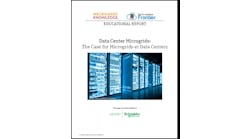New York holds a special place in the hearts of microgridders because it was early to the game, rolling out a $40 million program to promote the technology eight years ago, back when the term microgrids was so new to the lexicon that spell-checkers were convinced you meant micrograms.
Ultimately, the state program, known as NY Prize, was sidelined before it fulfilled its three phases. Few of its microgrids were actually built. But the program gets credit from industry insiders for creating a sandbox where they were able to learn and make mistakes that led to later successes nationwide.
The initial stumble of NY Prize notwithstanding, New York City has proven to be fertile ground for microgrids for a host of reasons, including the city’s too frequent power outages, many caused by storms pummeling its low-lying coastal areas or extreme heat overwhelming its electric grid.
For Montgomery “Monty” Bannerman, an energy veteran and New Yorker, enough was enough the day he witnessed chaos in the streets during a midtown Manhattan power outage. Firefighters were carrying a 300-pound man down the stairs of a 30-story building. Volunteers were doing their best to direct snarled traffic. And a general sense of anxiety pervaded as people saw their cell phone batteries fade, cutting them off from communication.
Bannerman now leads MicroGrid Networks, a four-year-old Brooklyn-based company whose employees are all New Yorkers determined to defend the home turf with an aggressive microgrid development plan.
Hyper New Yorkers
“We call ourselves hyper New Yorkers because every person, employee manager, executive board member is a New York City resident,” said Bannerman in a recent interview with Microgrid Knowledge. “We believe that our city is at great risk.”
New York City is also one of the most “powerful, emerging, renewable energy markets” globally because of its economy, real estate, infrastructure and its climate and clean energy goals.
Last month MicroGrid Networks broke ground on a $12 million community microgrid at its headquarters in the East Williamsburg neighborhood of North Brooklyn. The first phase includes a 20-MWh energy storage system, 60 kW of rooftop solar and two high-speed electric vehicle (EV) chargers. Phase two adds 20 MWh of storage plus 30 kW of solar.
“Someone would say, ‘hey, five megawatts, what’s that?’ But well, let me say this. That’s five megawatts of reliability. I lived through three blackouts in New York City that could [have been] mitigated and prevented by facilities like this,” said Randy Peers, Brooklyn Chamber of Commerce president and CEO.
Join us in Philadelphia June 1-2 for Microgrid 2022, the largest worldwide gathering of microgrid leaders and innovators.
Expected to be complete in 2023, the microgrid will serve the company headquarters and community members through a virtual solar billing program. In addition, its EV charging stations will be available for public use.
Backed by SER Capital Partners, MicroGrid Networks has dozens more microgrids in planning, all within the city. Smaller microgrids (about 5 MW) are designated for about 35 sites. It hopes to double that number to 70 in the next five years. The company also plans to build 10 larger projects, 20 MW-50 MW each, and two district energy systems, each about 200 MW. The microgrids will incorporate solar, storage, electric vehicle charging and possibly fuel cells at a later date. All are designed with an eye toward serving the city’s notoriously congested grid.
No illusions
As New Yorkers, the MicroGrid Networks team is under no illusions about the difficulty of permitting, building and interconnecting energy infrastructure in the city, never mind winning community support. Bannerman calls it the “very essence of complexity.”
“You won’t find another part of the world where people are more bought into the idea that we have to do something — we have to convert to clean energy. That doesn’t remove the old thing called NIMBY,” he said.
So the company is spending a lot of time courting neighborhoods, working with Consolidated Edison and the New York City fire department, and aligning itself with city and state energy goals. Its business model is interwoven with an array of utility and state initiatives, among them Consolidated Edison’s non-wires, non-pipeline and Auto-DLM solutions, the state value of distributed energy resources (VDER) tariff and its community distributed generation program.
Ultimately, the company’s goal is to make microgrids a “valued feature” in New York City’s neighborhoods, not something separate and invisible to people as conventional energy tends to be, Bannerman said.
“When all else fails, we want everybody in that local community to feel comfort knowing that there is at least one place that they can go to where the power is on, and they can communicate to their families and neighbors that they’re OK,” he said.
Learn more about microgrids. Subscribe to the free Microgrid Knowledge Newsletter.







